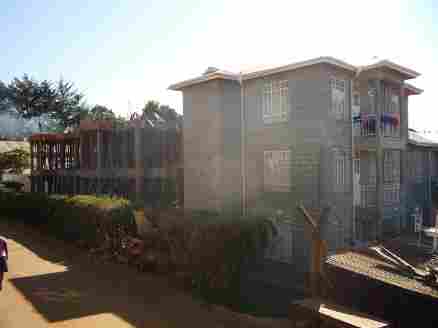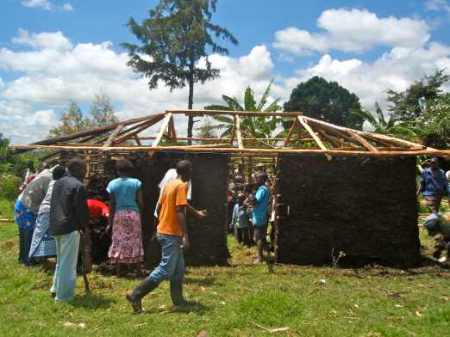The Short Version
My dream is to some day perhaps fifteen years from now work in biomedical devices for an institution that seeks a profit in order to provide a service. I’m particularly interested in effective, reliable, and cheaper devices for the 90% of cases which have the same needs. An institution like this can be consciously beneficial to its employees and work to strengthen other groups with shared goals. In law, a business is treated like a person. It might act like one—growing, fulfilling its responsibilities, and serving its community.
The Frameworks
Businesses provide the great majority of society’s services but corporate social responsibility is an incoherent concept. A publicly traded company has a contractual, fiduciary, and legal obligation to make the greatest possible profit. This is how the system works and the trust and transparency built up in a few international stock exchanges has allowed a great portion of all business complexity since the Dutch East India Company.
This does not have to be the only option. We should neither take for granted the incredible opportunities for diversified (read safer) complex growth, nor invest our money purely into projects whose function for society we don’t care about. I think people should do what they want with their money. Most people live (or want to live) with greater purpose than their own material advancement.
The Business Example
Not all businesses exist solely to make money. A privately owned business does what its owner(s) wants it to do. This gives it the opportunity to provide greater and more profound public services in certain situations than other corporations. One famous example of this is the Building and Loan, famous to my generation only through the crashes and “It’s a Wonderful Life”. These privately owned businesses provided a critical public good using the banker’s relationship with the community members to allow trust and a judgment of risk to provide home loans to working class families.
This model of business for the owners’ purposes, not just their good, exists in impressive modern versions as well. This year, I nearly worked for a company which did device refurbishment for the suppliers of the equipment. It is successful, but the amazing part of its operation isn’t the repair capability but how it treats its workers in the U.S. and abroad. Instead of merely using workers to provide a service to customers, which it does, the business builds up workers, supplying services it can efficiently provide, encouraging personal growth, and partnering with local churches.
The Benefits
The provision of gainful, educational employment is possibly the greatest development service possible. Not only does it materially provide, but it improves skills, education, and hope. Further, it embodies the economic definition of sustainable because the business operation there is positive net present value, i.e. profitable, so can continue to build up a community into the future through its own actions as well as agglomeration effects. (Aside: agglomeration effects are one the best arguments I’ve heard for the enormous success of areas within China and India. When one business moves into an area, they require many support personnel and institutions to function efficiently. As they spend money to build these up to make their business more efficient, that decreases the cost and increases the incentives for more business in the area creating a virtuous cycle.)
Many current businesses have donations where they provide their services for improved public image or altruism (to the minor detriment of the shareholders) but generally do so inefficiently as they do not position themselves to provide maximum benefit. The business for service can systematically provide their services at cost to groups of the same mission designed to maximize the benefits while costing the business only the time of some personnel. I worked for a health care equipment company one summer. They produced their equipment for one tenth the price they sold it for. This went to pay for salary, testing, approvals, failed innovations, and the other systems required to bring the successful product to the market. It makes sense, but it is not purpose driven. The business with vision can sell the equipment at cost to institutions which share their goals and would not otherwise be able to pay. In this way, the market position of the business can be used to provide valuable goods much more efficiently than NGO’s and other groups which try to provide these services and at effectively no cost to the business.
The Opportunity
I dream of applying this model to the field of medical equipment.
The United States subsidize world medical research and development enforcing patent laws. Increased and increasing demand for lower cost solutions for the same problems we have always faced in medicine creates an opportunity to profitably provide products in this area. Previous systems encouraged the best humanly possible solutions instead of best for the money—that paradigm appears to be changing.
This shift in U.S. health systems creates the demand for the product I want made for both the United States and the world. Tenwek hospital where I currently work uses very few devices designed specifically for a third world context. When I have gone to rural clinics, they seem to use few devices designed for them. Instead they are using the most ruggedized and cheapest options from the first world and making them last. Working to make devices which are reliable and do the job needed 95% of the time is how we improve outcomes for the world while decreasing costs. My impression is that far more often, a failure in health provider systems fails a patient, not their equipment’s lack of advanced features and conveniences.
In this way, the field I dream of entering is desirable no matter what the business model. As I said at the beginning, businesses provide for most of society’s needs. Businesses are incentivized by the market. And the market is moving in the direction in which I am thinking.
The Proof
This model is possible. Aravind Eye Care System has nearly 5000 beds between the five hospitals and 13 additional vision centers. In one year they saw more than 2.5 million patients and performed over 300,000 surgeries, more than half of which were given for free or at discounted prices. They are able to do this, partially, because their biomedical research and production has cut their price of an intra-ocular lens (required for cataract surgery) from over $100 to about $5.
The Difficulties (optional, you have read far and this is just a continuation of my thoughts, but I really think this model can work.)
The three ways in which this entity differs from modern publicly owned corporations, employment benefits, needed product distribution, and private ownership, each pose a potential problem the survival of the group.
First, the ownership model does not easily allow for public small amounts holding and investment. Publicly owned companies work because their accounting can be transparent and their successes and failures quantified. The same issue gives difficulty to NGO’s the world over: how do we quantify success since there is no “util” or measure of good. Thus every investment must be manually studied, an expensive proposition which will slow growth. This issue is not purely detrimental, the significant investment by an owner into the group gives superior incentive to ensure good corporate governance, a way in which the publicly owned model has been mediocre. Additionally, for a large business, though it is a detrimental from a diversity of assets perspective, employees are in a prime position for ownership of the company.
A soft hearted business has the potential be timid with the personnel which make up a company. Each employee must provide a benefit to the company in exchange for employment. Period. Even a company whose explicit goal and structured incentives are to maximize profit can have significant human resource issues especially in a down market. All companies struggle to have their workers believe in the work they are doing. A study of business mission statements found, (to the surprise of the authors who thought that the societally beneficial businesses would have the most loyalty) that the workers of a business are motivated by strong missions in whatever direction. The reason that the best want to work for Google (not Microsoft) is their “Don’t be Evil” motto and actions. They aren’t perfect, but they pulled out of China. They try, so they attract the best.
Here, the model of Tenwek Hospital, where I work in Bomet Kenya, is instructive. Each employee greatly benefits from the hospital, but they are also deeply invested in the mission of the hospital. A good friend of mine at the hospital recently said that he thanks God for bringing him here because he sees the difference between his teenage son and those of his colleagues who sought the highest power job they could attain. My friend’s commitment to the hospital’s mission benefits his workers, the patients, and provides an example to his son. His work allows more complex service than top down management can possibly provide. Not every institution can have the loyalty of a rural mission hospital, but investment by the employees is necessary to mitigate inefficiencies in needed product distribution.
This final difficulty in the inefficiency of delivery of needed goods in a way that will not damage the institution is potentially dangerous. As stated above, we cannot measure good in “utils” so it requires stewardly caring on the part of those who work for the institution at every level associated with the institution’s donations at cost. If a culture of responsibility to the institution fails to develop, that part can become inefficient and will have to be abandoned, simplifying the model to that of the business’s profitable benefit to society plus that of the device refurbusher working for his employees.





